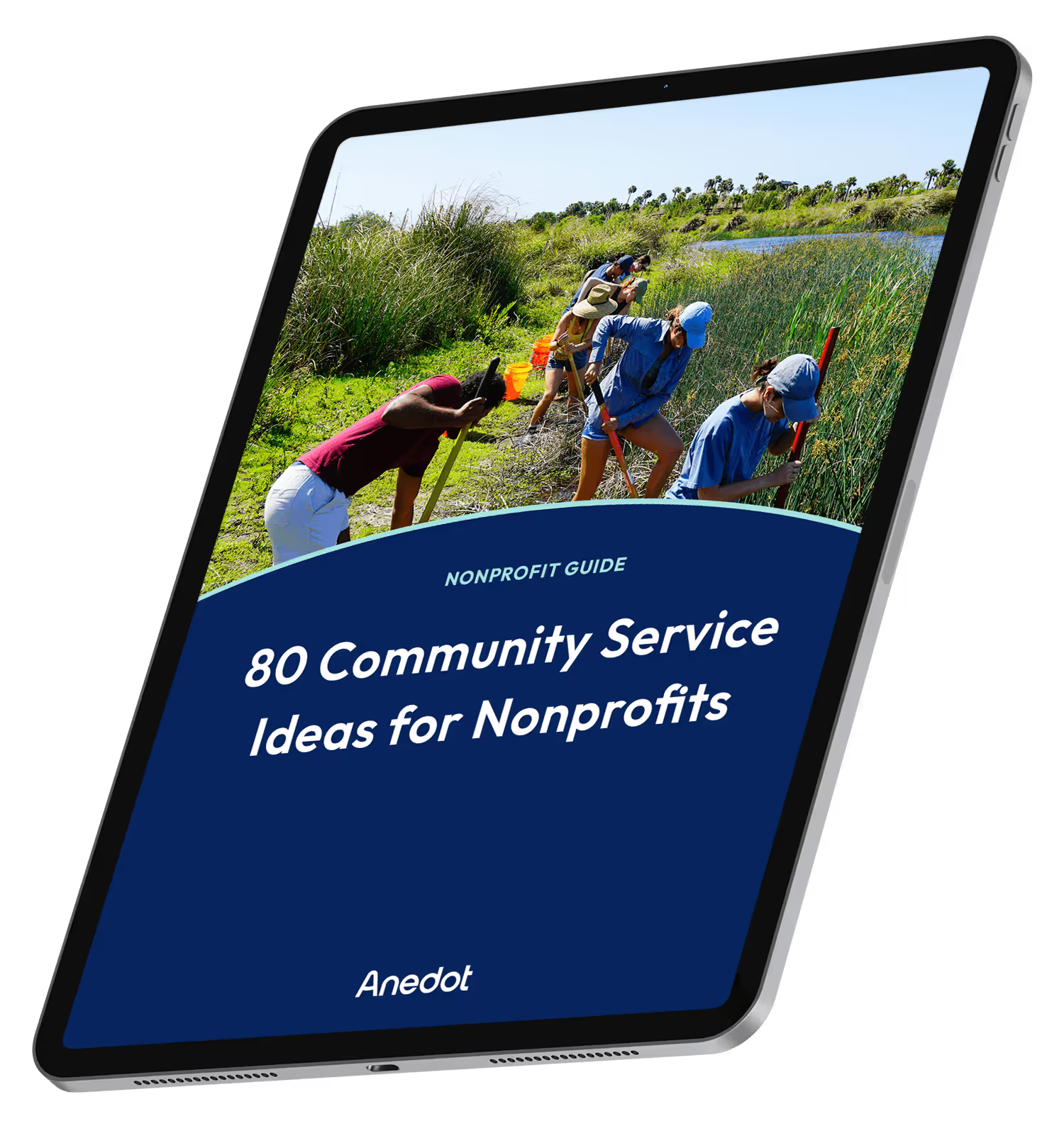Podcast episode transcript ↓
Josh:
Welcome to Big Ideas For Every Org. We help leaders discover powerful, big ideas that increase organizational impact.
I'm Josh, and today we're joined by Marty Duren.
Marty is a 30 year veteran of the church, para church and nonprofit spaces with his most recent work being a director of communication for a Global Church Planting Network.
He is now the sole proprietor of Marty Duren Freelance Writing.
In this episode, we're talking about leading up and how to influence decisions and decision making inside your organization.
Leading up is the idea of working in a way that supports and guides your boss or leadership to successful outcomes despite dysfunction.
The higher one sits in the org chart, the harder it is to have proximity and context to what's really going on.
Leading up is a powerful tactic to help you and your organization grow together and succeed. Marty, thanks for joining us.
Marty:
Hey, Josh. Good to be here. Thank you.
Josh:
Hey, so before we jump into the topic today, which is leading up influencing despite dysfunction, before we talk about that, tell us a bit about yourself.
Marty:
So I live in Nashville, Tennessee. Married, got four kids and two grandkids. Grew up south of Atlanta, went into the pastoral ministry in 1989.
So getting up on, golly, 35 or so years, getting close.
Pastored in two different sized churches, a small and a medium, was on staff at a megachurch northeast of Atlanta.
Served several years with a major Christian publisher here in Nashville.
And then, as you mentioned, was director of communications at a Global Church Planting Network up until recently.
And now, sole proprietor of Marty Duren Freelance Writing.
What is "leading up"?

Josh:
Awesome.
So you have served in orgs, large, small, churches, and para church ministries.
You've been around. So before we talk about the solution, tell us how did you begin to see the problem associated with leading up and the need to lead up?
Marty:
Well, there have been a lot of opportunities to lead and to be led over the years that I've been in ministry and in the nonprofit world.
And it doesn't take a long time to realize that two things can be true.
One, you can be leading a dysfunctional organization. Or two, you can be in a dysfunctional organization.
So many years ago, I began trying to figure out my own leadership style, my own leadership problems, why my staff often in church was frustrated with me, why other leaders in church didn't quite get what I was trying to do.
So I tried to grow there.
And then when I got into organizations, I realized that just because organizations have good people at the lead doesn't mean everything is going smoothly.
And so there can be different levels of dysfunction. The dysfunction can come from different directions in an organization.
Even nonprofits, where everybody has got a good thing in mind.
Even Christian nonprofits, where everybody supposedly loves the Lord and wants to see him glorified.
That isn't a guarantee that things are going to work smoothly.
So the same kinds of dysfunctions that can operate within secular type organizations or regular nonprofits that aren't religious can also affect religious and even Christian organizations.
Josh:
Yeah. So unpack for us and maybe define for us what leading up is.
How did you discover leading up? What is that?
Marty:
It's just the idea that wherever you are in an organization, that you can lead in a way that gets the organization moving toward its goals.
So in one business I was in, I had only one actual direct report.
And so my responsibility was to help that person, help his boss, his secondary boss, the guy that was my boss, reach his goals.
So while I trained my direct report on some leadership stuff and how to communicate within the organization and some things like that, I also had to help him keep his eye on the larger picture that was going on with the organization and with his secondary boss.
He had certain goals he had to reach.
And so my direct report had to lead up toward reaching those goals, which weren't his specific goals.
For me personally, I had to lead him up so I couldn't let him get discouraged.
For instance, I couldn't let him stay frustrated when he got frustrated. I had to help him see beyond his immediate situation.
Biblically speaking, if you want an illustration from the Bible, there's a really good one where David is all discouraged about something in the old Testament.
And there's this unique verse in the Bible that says David encouraged himself in the Lord his God.
So there's an idea that every person has to lead themselves up.
So you can't always depend on someone else to come along and I don't want to say take you by the hand, that sounds demeaning, but you can't always depend on somebody to be there when you're discouraged or struggling.
Sometimes you have to lead yourself up, which means you have to encourage yourself to get after it and pursue the goals.
Josh:
So what was the process of implementing this in your organization? Was it through a one-on-one, was it through a group meeting? How did that go about?
Marty:
Yeah. So in the organizations where I had the opportunity to do the leading, it was usually either reading a book together or going to a conference together.
So when I was a pastor, for instance, I would try to take people every year to a conference where we could hear ideas about leadership and organization and how to be effective in ministry and those kinds of things.
So rather than just sitting around in staff meeting and bemoaning our station, we took the initiative to try to find the answers to the problems that we faced.
So if it was transitioning from one style of worship or one style of ministries with a different style, or whether it was trying to organize for more growth or whatever it was, if we needed ideas, we didn't just sit around and hope that they came.
We pursued them through these opportunities.
When I was not leading the organization, but was in the organization, sometimes it was just a matter of getting a book on my own or ordering some books on my own, or listening to a podcast.
That would give me hints that would lead me to another direction or that would lead me to better ideas or to change my own behavior where I was more effective in what I was doing.
The older you get, the good news is that a lot of this stuff just becomes the way you think.
So you can, after a while, think your way out of certain situations that you find yourself in.
So there can be certain dysfunctional situations that based on all the reading that you've done and all the listening that you've done and all the watching that you've done and all the conferences you've attended over time, you just learn to think through these situations and you can lead other people up and you can teach them yourself.
And that's when it really does become a lot of fun and pretty interesting.
Leading up despite dysfunction

Josh:
Yeah.
So if you've been around in various organizations, you probably belong to a team that has dysfunction or a company.
And it seems that companies that have a lot of dysfunction or teams, there's not a lot of space to influence.
There's not a lot of openness to new ideas.
So tell us what challenges did you face and have to overcome in doing this?
Marty:
Well, there's always the, either communication breakdown or differing directives coming from people who are above you in the organization.
So if you see a gap, if you see the bridges out on the road to the goal, and you're trying to rebuild the bridge, but there are directives that come down that have the effect of overflowing the gully with water, then you can't always make those changes on your own.
And so sometimes you have to, and when I say this, I don't mean you have to go behind people's back, but what I'm saying is you have to look for where the gaps are and how you can fill those gaps or where you can build a bridge to get people from one side to the other side.
So that doesn't always mean that you have to confront someone.
Sometimes it means you have to find out where the permissions are and you have to operate within those permissions.
So maybe that's contacting a team member that you know is discouraged about something that was said in a staff meeting, or they got a directive that kind of contradicts something they'd been told before.
And you contact that person say, "Well, let's think through this. And how can we still make it work?"
And you don't have to reinvent the wheel or go back to the very beginning of what you were doing, but you know your boss ends up being pleased or something like that, where you're moving the team as much as you can in the direction that the organization is trying to go.
Even if the team members themselves are either frustrated, distracted, or aren't sure what's going on around them, you can be the one that leads them up into the right direction that benefits the organization overall.
Josh:
Yeah. So looking back now, and you just named a couple, but what are some other positive effects and results from focusing on leading up, developing those skills to lead up?
Do you have any stories or any particular moments where you were able to influence just despite the dysfunction going on around?
Marty:
Yeah. So there was one situation, and I'll be pretty careful with this, but there was a situation where I had maintained a relationship with a former direct report and he had moved on and up.
He was above me in the organization at this point. And a book was about to be published.
And when I saw the cover of the book that he had brought the drafts copy or whatever into a meeting that we were in, and when I saw the cover of the book, I immediately knew that there was a problem with the book.
It was fine, it actually represented the subject matter well, but there was just something about the cover that was going to make it very, very easy to deface in such a way that it could potentially cause a lot of problems for the organization.
And it could have, in effect caused a recall if the book went to print.
And so I took the draft out of his hand and made a couple of marks on the cover and turned it around and said, "This is what's going to happen if this book goes into stores."
And he like turned white as a sheet, got on the phone immediately, and we were able to stop the plans and change the cover of the book to something that wasn't potentially, again, I want to be quick to say there was nothing actually wrong with the cover.
It was just made in such a way it could easily have been defaced and then there would've been something wrong with the cover.
And so we were able to catch that, redesign the cover completely before it went to print, and avoid that altogether.
But if I hadn't had a good relationship with that guy still, even though he had passed me, essentially, in the organization, then I wouldn't have had the standing with him to make this comment and recommendation that he could pass along.
So any of those things like that can work for the good of the organization.
Josh:
There's a phrase right now going around, I see it all over social media.
And the phrase goes, "Not my monkeys, not my circus."
And the idea being, "Look, I've got my own problems right in my lane. I don't have time or the effort to lead up, to help those above me succeed and win, to help them become the leaders they need to be. I don't have time for that."
What would you say to those who run the fence or have concerns about leading up and influencing in the midst of dysfunction rather than just leaning out and saying, "Hey, not my monkeys, not my circus."
Marty:
Well, first I would say that for almost everybody, there is a time that you have to say, "Not my monkeys, not my circus."
There, there just are some things that you can't get involved with.
But generally speaking, if you're in an organization and you're there and you don't have prospects to leave, you can't take part in the great resignation, you're going to be where you're at for a while, then one of the ways to make it more palatable and one of the ways to actually make your job, at least portions of your job more enjoyable, is to lead up, to get involved with your coworkers or your direct reports.
Or even ask questions of your supervisor. Let them know that you're actually interested in what's going on in the organization outside of your immediate role.
And your reputation will change in such a way that people begin to look to you for advice.
They begin to ask you about books that they should read or websites that they should visit or podcasts that they should listen to. And it has the effect of raising your stature within the organization.
So you don't have to go climbing over people and stepping on them on your way up the ladder.
You can influence them in such a way that they want you to go up the ladder because they see that you're good for the organization.
And the more influence you have, the better off it's going to be for everybody.
The benefits of leading up in your organization

Josh:
That's so good.
I remember several years back, someone mentioning leading up, well, you're going to have to lead up in this situation.
And I remember thinking, well, my leader is the leader.
They need to lead in the situation. And then over the next weeks and months, I realized, oh yes, this is part of your job is leading up. And it was hard to grasp, especially if you come from a background that has more hierarchical leadership, you think, oh, well, they don't care about my opinion on this.
Or they don't want me to say, "Hey, the bridge is out up ahead."
And in fact, most leaders do because most leaders are still growing and learning just as all of us, no matter where you're at in the org chart, leaders are growing and they need those eyes on the ground.
They need that perspective to see the things that they cannot see.
And, look, there's going to be dysfunction in every organization.
And all of us have a responsibility to reduce that dysfunction and help fix those issues.
So some who are listening may be wondering what happens if I've done everything mentioned today, and I'm just not seeing the results?
What do you say to them, Marty?
Marty:
Well, there's a couple things I would say.
First, there are obviously situations where you can't leave.
Maybe you got a family, your options are limited, you're in a place where the job market is cold and you're just going to be where you are.
I would just say to you, continue to develop your own personal skills.
If you can't go to conferences, you can't go to college anymore, you can't get educational supplement from your work, then you can buy a book every now and then. You can still have conversations with people.
You can make yourself a better employee even if the organization is never going to change.
Even if the dysfunction stays the same, or even gets worse, God forbid.
You can still be the best employee that you can be.
So that'd be the first thing I would say is try not to let the dysfunction around you bring you down to where you can't function yourself.
The second thing I would say is if it does reach a point, then there can be a time where you just have to leave. It doesn't matter if you like your teammates, they could be the greatest people in the world.
It doesn't matter if you actually like the goal of the organization, the big picture of the organization.
If you are aware that the dysfunction around you is going to make it impossible for the organization to reach its goals, which is generally what dysfunction does, then you may have to pull the rip cord and just get out of there and find another place.
And what I would say to you if you're in that particular situation is, no matter how frustrated you might be, don't burn everything down.
The organization has a purpose. It's going to get some stuff done.
Just be kind on your way out, leave with good reputation.
But try to find a place where your skill set can be used as well as you want it to be.
The chances of you finding a place that has zero dysfunction is going to be like super low.
Josh:
Yes.
Marty:
So don't get your expectations to the point that, "Hey, all I need to do is change jobs, and everything's going to be perfect that the next one. It's Going to be paradise on earth."
That's almost certain not to happen.
It's probably not going to happen if you're the only employee and you work for yourself.
There's going to be some dysfunction still.
So just prepare yourself, there will be dysfunction, but try to take your new lessons along so that you can recognize the red flags sooner next time, maybe, and begin to address them in such a way that you can lead up and it'll make a better difference.
Closing thoughts on leading up

Josh:
Marty, any resources that you would mentioned for leading up?
Marty:
The one thing that I've noticed recently, and there's a free kind of version and then there's a subscription, is the email from MIT's Sloan Management review.
I think you get a couple of three times a week email that provides a lot of content.
Then you get a certain number of free articles a month before you have to subscribe.
But anything coming out of MIT on the organizational side is always going to be on the leading edge.
And so that's been pretty encouraging to me. So that's one of the things that you can get for free, or you can choose to pay.
Josh:
Today. We've been talking with Marty Duren about leading up and influencing despite dysfunction.
If you'd like to learn more about Marty or connect with Marty, you can at martyduren.com.
Also check out his podcast on uncommontarypodcast.com.
Marty, thanks so much for joining us today.
Marty:
Hey Josh, my pleasure.
Josh:
Hey, thanks for listening.
If you enjoyed this episode, please share it with others or leave us a rating and review.
To view show notes and resources mentioned in this episode, visit anedot.com/bigideas. Again, that's A-N-E-D-O-T.com/big ideas.
We'll see you next time.

80 Community Service Ideas for Nonprofits


























